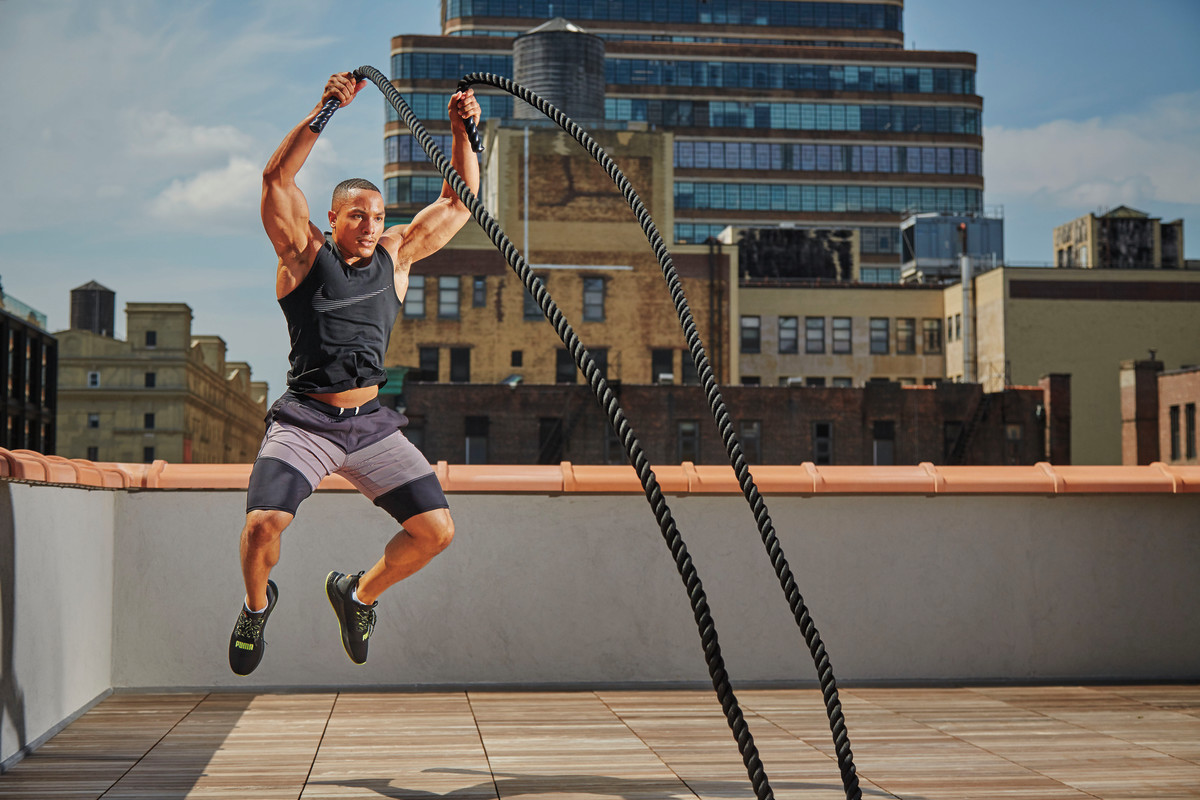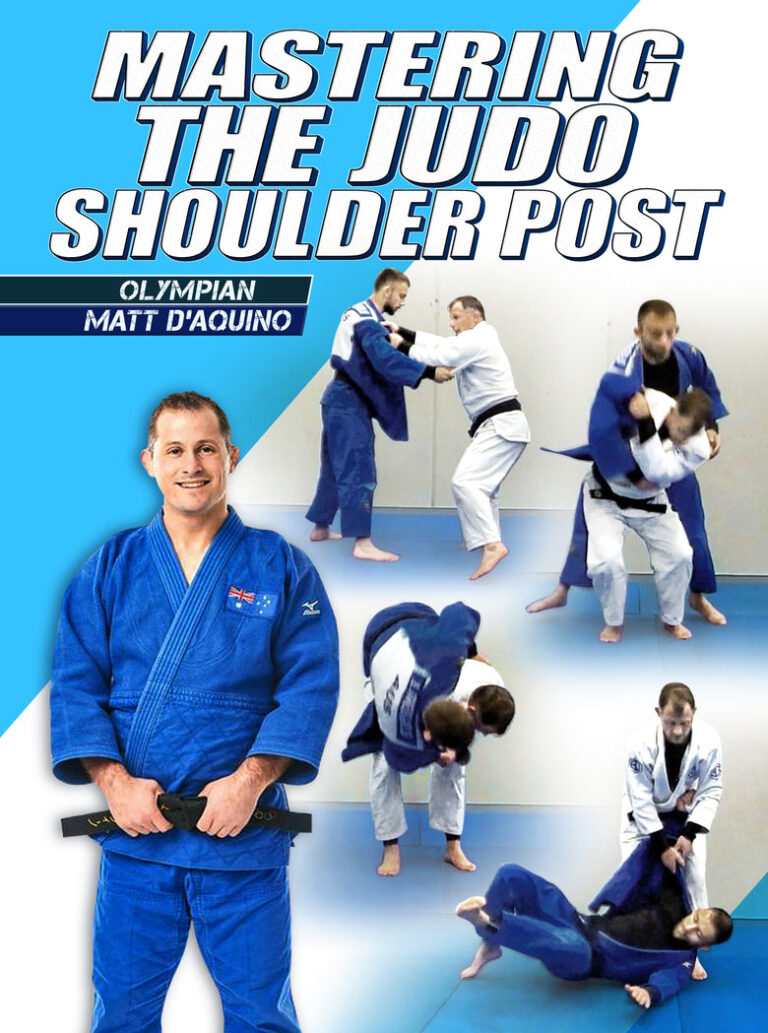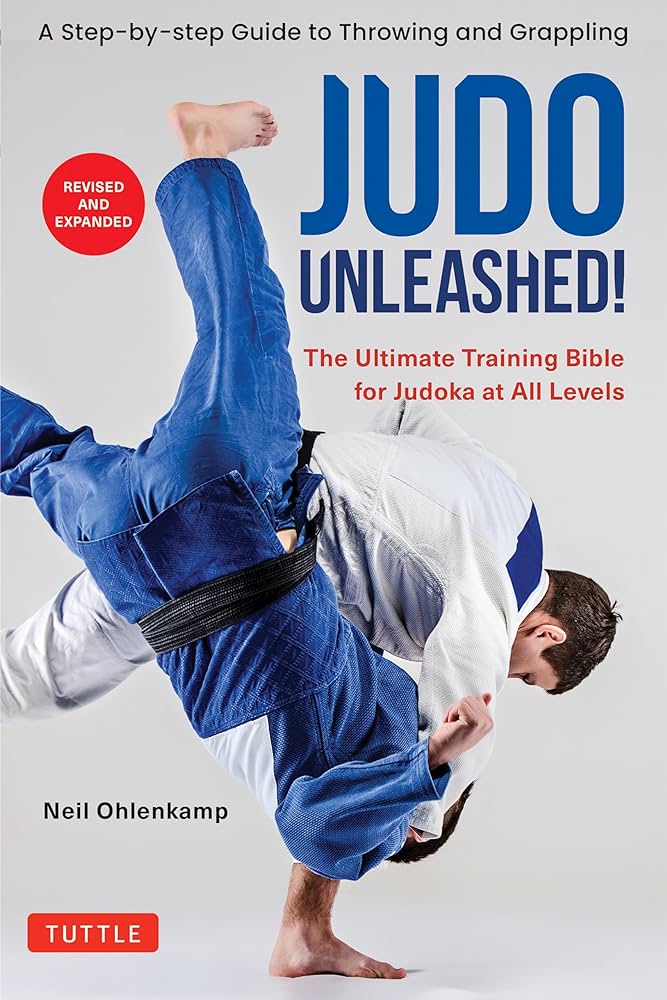Skipping rope is commonly used in sports such as boxing, CrossFit, and double Dutch. In boxing, skipping rope helps improve footwork and cardiovascular endurance.
CrossFit incorporates skipping rope as a high-intensity cardio workout. Double Dutch is a competitive sport that involves two ropes being turned in opposite directions while participants jump in and out. These sports utilize the skipping rope to improve agility, coordination, and overall fitness levels.
Additionally, skipping rope is a convenient and portable exercise tool that can be used for at-home workouts or as a warm-up in various sports activities.
Credit: www.insider.com
1. Boxing
Boxing is a highly intense and dynamic sport that requires speed, skill, and stamina. It is well-known for its rigorous training routines and demanding physical conditioning. One essential piece of equipment used by boxers to enhance their performance and improve their footwork is the skipping rope, also known as a jump rope.
Basic Boxing Techniques With A Skipping Rope
When it comes to boxing training, using a skipping rope is an effective way to develop agility, coordination, and endurance. Here are some basic techniques that boxers practice with a skipping rope:
- Single jump: This is the fundamental technique in skipping rope training. Boxers jump over the rope with both feet together, ensuring that the rope passes under their feet and over their head in a smooth motion. It is essential to maintain a consistent rhythm and land softly to minimize impact on the joints.
- Alternate foot jump: This technique involves jumping over the rope with one foot at a time. Boxers alternate between left and right foot, mimicking the movements and footwork required during a boxing match.
- Double under: This more challenging technique involves rotating the rope at a faster speed and jumping high enough to pass the rope under the feet twice before landing. It requires excellent coordination and timing.
Advanced Boxing Drills With A Skipping Rope
In addition to the basic techniques, advanced boxers incorporate drills into their skipping rope training to enhance their boxing skills and endurance. Here are some advanced drills that boxers can try:
- High knees: This drill involves lifting the knees as high as possible while maintaining a consistent rhythm with the skipping rope. It helps improve speed, explosiveness, and coordination.
- Crisscross: In this drill, the boxer crosses their arms at the wrists while jumping. The rope passes under the arms and over the head in a crisscross motion. It challenges coordination, agility, and focus.
- Backward jump: This drill requires jumping backward, facing away from the direction of the rope. It helps boxers work on their reflexes, balance, and spatial awareness.
Using a skipping rope in boxing training not only improves footwork and coordination but also serves as an excellent cardiovascular exercise. It is a cost-effective and portable tool that can be used almost anywhere.
2. Crossfit
With its emphasis on functional movements and high-intensity workouts, CrossFit has become wildly popular among fitness enthusiasts worldwide. One key tool that often finds its way into CrossFit workouts is the humble skipping rope. Not only does skipping rope add an element of cardio to the workouts, but it also helps improve coordination, agility, and endurance. In this section, we will explore some jump rope exercises commonly seen in CrossFit programming and how the skipping rope can be combined with other CrossFit movements for a challenging and dynamic workout.
Jump Rope Exercises In Crossfit Workouts
Jump rope exercises are a fantastic way to elevate your heart rate and get a full-body workout. In a typical CrossFit session, you might encounter various jump rope exercises that target different muscle groups and provide a range of benefits. Here are a few examples:
- Double-unders: This exercise involves spinning the rope twice beneath your feet for every single jump. Double-unders are excellent for developing coordination, cardiovascular endurance, and calf strength.
- Single-unders: Single-unders are the foundation of jump rope exercises. They involve jumping over the rope with both feet, one jump per rope rotation. Although they are less intense than double-unders, single-unders are still highly effective for improving coordination and cardiovascular fitness.
- High knees: This exercise involves running on the spot while rapidly lifting your knees as high as possible with each jump. Adding the skipping rope intensifies the movement, providing a fantastic cardiovascular workout while engaging your core and leg muscles.
- Side-to-side jumps: As the name suggests, this exercise entails jumping from side to side over the rope. It targets your calves, quads, glutes, and core while improving your lateral agility and coordination.
Combining Skipping Rope With Other Crossfit Movements
One of the many reasons CrossFit stands out is its ability to combine different movements to create varied and unique workouts. By incorporating the skipping rope into CrossFit workouts, you can amplify the intensity and challenge your body in new ways. Here are a few examples of how you can blend skipping rope exercises with other CrossFit movements:
| Skip and push-ups: | Alternate between skipping rope and performing push-ups. This combination targets both upper and lower body strength and adds an extra cardiovascular element to your push-up routine. |
| Skip and burpees: | Combine skipping rope sessions with sets of burpees. This pairing transforms a classic bodyweight exercise into a high-intensity cardio workout, working your whole body. |
| Skip and kettlebell swings: | Switch between skipping rope intervals and sets of kettlebell swings. This combination challenges your cardiovascular capacity, engages your core, and strengthens your posterior chain. |
As you can see, the possibilities are endless when it comes to incorporating the skipping rope into your CrossFit training. Experiment with different combinations to keep your workouts fresh and exciting while reaping the benefits of improved fitness, strength, and coordination.
3. Double Dutch
Double Dutch is a fast-paced and highly energetic sport that involves two ropes turned in the opposite direction while one or more jumpers perform various tricks and routines. It is a popular playground activity as well as a competitive sport that requires coordination, agility, and precise timing. In this section, we will explore the rules and techniques of Double Dutch, as well as the skills and tricks used in competitions.
Rules And Techniques Of Double Dutch
Double Dutch has a set of basic rules and techniques that jumpers must adhere to in order to perform well and create an impressive routine. These rules and techniques include:
- Turning the ropes: Two rope turners stand at each end of the ropes and turn them in an opposite direction. This requires coordination and synchronization between the turners to maintain a consistent rhythm.
- Timing and coordination: Jumpers must time their jumps and movements to match the speed and rhythm of the turning ropes. This requires excellent coordination and a keen sense of timing.
- Entering and exiting the ropes: Jumpers enter the ropes by jumping in or stepping over them and exit by either jumping out or stepping out. This must be done smoothly and without interrupting the flow of the ropes.
- Individual and team routines: Double Dutch can be performed by individuals or teams. In team routines, jumpers must coordinate their movements and execute choreographed routines with precision.
- Adding tricks and acrobatics: Jumpers can incorporate various tricks, acrobatics, and dance moves into their routine to add flair and excitement. These can include cross-overs, high jumps, flips, and other creative maneuvers.
Skills And Tricks For Double Dutch Competitions
Double Dutch competitions showcase the skills and tricks of the jumpers, who strive to impress the judges and spectators with their athleticism and creativity. Some of the essential skills and tricks used in Double Dutch competitions include:
- Speed and endurance: Jumpers need to have excellent speed and endurance to keep up with the fast-paced nature of the sport. They must be able to maintain a consistent rhythm and execute moves with precision.
- Complex tricks: Jumpers often perform complex tricks that involve multiple rotations, quick reflexes, and precise timing. These can include multiple under-the-leg jumps, criss-crossing the ropes, and intricate footwork.
- Team coordination: In team competitions, jumpers must work together seamlessly, coordinating their movements and transitions. This requires communication, trust, and shared timing.
- Showmanship: Besides technical skills, jumpers are also judged on their showmanship and stage presence. They are encouraged to express their individual style, charisma, and creativity to captivate the audience.
- Artistic interpretation: Some Double Dutch competitions include a category for artistic interpretation, where jumpers can incorporate storytelling, music, and dance elements into their routine. This allows for unique and visually stunning performances.
In conclusion, Double Dutch is an exciting and dynamic sport that combines athleticism, coordination, and creativity. By following the rules and techniques and mastering the skills and tricks, jumpers can create breathtaking routines and compete in high-level Double Dutch competitions.
4. Muay Thai
Muay Thai, also known as Thai boxing, is one of the sports that utilize a skipping rope for conditioning and developing footwork. It is a martial art that involves striking techniques using fists, knees, elbows, and shins. The skipping rope is used to improve endurance, agility, and coordination in this dynamic and intense sport.
Sports That Use A Skipping Rope: 4. Muay Thai
Muay Thai, also known as “The Art of Eight Limbs,” is a combat sport originating from Thailand. It utilizes a combination of fists, elbows, knees, and shins for striking and clinching techniques. One of the key elements in Muay Thai training is agility and footwork. To enhance these aspects, trainers often incorporate skipping rope exercises into their warm-up routines and training sessions.Skipping Rope Exercises For Warming Up In Muay Thai
Just like in any other sport, warming up is essential in Muay Thai. Skipping rope exercises offer an excellent way to get your body ready for intense training. Let’s take a look at some effective skipping rope warm-up exercises used in Muay Thai: 1. Basic Jumping: Start with basic jumps, keeping your feet together and jumping rhythmically over the rope. Focus on maintaining a steady and consistent pace. This exercise helps increase your heart rate and warms up your entire body. 2. High Knees: While skipping rope, focus on lifting your knees as high as possible with each jump. This exercise helps improve balance, mobility, and strengthens your core muscles. 3. Double Unders: Double unders involve a quick rotation of the rope twice with a single jump. As you gain proficiency, you can increase the number of rotations. This exercise enhances coordination, agility, and cardiovascular endurance. 4. Side-to-Side Jumps: Jump laterally from one side to the other while skipping rope. This exercise helps develop lateral movement, which is crucial in Muay Thai for evading opponents’ attacks and maintaining quick reflexes. 5. Alternate Leg Jumps: Jump while alternating legs, lifting one leg off the ground while the other one is in the air. This exercise improves balance, coordination, and strengthens leg muscles.Incorporating Skipping Rope In Muay Thai Training
Muay Thai fighters understand the importance of having quick feet and agility, and that’s where the skipping rope comes in. Apart from warming up, skipping rope exercises can be incorporated into Muay Thai training in various ways: 1. Conditioning: Skipping rope challenges and improves your cardiovascular endurance, footwork, and coordination. Regularly incorporating skipping rope sessions in your training routine will help you develop the necessary stamina to excel in Muay Thai. 2. Footwork Drills: Use the skipping rope to simulate different footwork patterns used during Muay Thai techniques. This includes practicing stepping in and out of range, moving laterally, and pivoting. By incorporating the rope, you can add an extra level of difficulty and enhance your agility. 3. Muscle Memory: Skipping rope exercises can help reinforce muscle memory for various strikes and defensive movements used in Muay Thai. By repeatedly practicing specific techniques while skipping rope, your body becomes more familiar with these movements, enhancing your overall performance in the ring. 4. Interval Training: Interval training involves alternating between high-intensity and low-intensity skipping rope exercises. This type of training closely resembles the intensity fluctuations experienced during a Muay Thai fight, helping you improve your endurance, conditioning, and explosiveness. Overall, incorporating skipping rope exercises into your Muay Thai training regimen brings numerous benefits. It helps improve your footwork, agility, coordination, and cardiovascular endurance, all of which are crucial for success in the ring. So, grab your skipping rope and start incorporating this simple yet effective training tool into your Muay Thai routine.5. Calisthenics
Calisthenics is a form of exercise that utilizes bodyweight movements to build strength, flexibility, and endurance. It is a great way to develop overall fitness and can be done anywhere, anytime, without the need for any fancy equipment. And one simple piece of equipment that can take your calisthenics routine to the next level is a skipping rope.
Jump Rope As A Part Of Calisthenics Routine
Adding a skipping rope to your calisthenics routine can increase the intensity of your workout while targeting multiple muscle groups at once. The rhythmic jumping motion engages your legs, core, and upper body muscles, making it a full-body exercise that helps improve coordination, balance, and cardiovascular fitness.
One of the great benefits of incorporating a skipping rope in your calisthenics routine is that it allows you to easily switch between different exercises, creating a dynamic and challenging workout. For example, you can start by doing a set of push-ups, then grab your skipping rope, and follow it up with a series of double unders or alternating foot jumps.
If you are just starting with calisthenics, using a skipping rope can help you build up your endurance and stamina gradually. Start with shorter intervals of skipping and gradually increase the duration as you progress. This way, you can work your way up to performing high-intensity skipping intervals that will push your cardiovascular fitness to new heights.
Using Skipping Rope For Hiit Workouts
High-Intensity Interval Training (HIIT) is a popular training method that involves short bursts of intense exercise followed by brief recovery periods. It is known for its ability to burn calories and fat while improving cardiovascular fitness in a short amount of time. And guess what? A skipping rope is a perfect tool for HIIT workouts.
With a skipping rope, you can perform a wide range of high-intensity skipping exercises, such as double unders, high knees, or criss-cross jumps. These exercises not only get your heart rate up but also engage multiple muscle groups simultaneously, making them perfect for a calorie-burning, full-body HIIT workout.
A typical HIIT skipping rope workout involves performing a specific skipping exercise for a set period, followed by a short rest period, and then repeating the cycle for a specific number of rounds. For instance, you can alternate between 30 seconds of double unders and 15 seconds of rest for 10 rounds. This will not only keep your heart rate elevated throughout the workout but also help you improve your skipping technique and coordination over time.
So, whether you are a beginner or a seasoned calisthenics enthusiast, incorporating a skipping rope into your routine can take your fitness journey to new heights. It is a versatile, affordable, and fun way to enhance the effectiveness of your workouts and challenge your body in new ways. So grab a skipping rope, jump in, and experience the amazing benefits it has to offer!

Credit: www.mensjournal.com
6. Hiit
High-intensity interval training (HIIT) is a popular workout regimen that combines short bursts of intense exercise with periods of rest or lower-intensity activity. HIIT has gained immense popularity among fitness enthusiasts due to its ability to deliver effective results in a shorter amount of time. By incorporating a skipping rope into your HIIT routine, you can elevate your heart rate, build strength, and burn calories.
High-intensity Interval Training With A Skipping Rope
High-intensity interval training with a skipping rope allows you to engage your entire body in a dynamic and challenging workout. The intensity of the intervals can be adjusted according to your fitness level, making it suitable for beginners and advanced athletes alike.
With a skipping rope, you can incorporate various skipping techniques, such as double unders, single leg jumps, and high knees, to increase the difficulty and intensity of your workout. These exercises not only target your cardiovascular endurance but also strengthen your core, legs, and upper body.
A typical HIIT skipping rope workout involves alternating between high-intensity skipping intervals and short rest periods. For example, you could perform 30 seconds of fast-paced skipping followed by 10 seconds of rest, repeated for a total of 10 rounds. This type of workout can be completed in as little as 10 minutes but provides immense benefits for your fitness level.
Sample Hiit Skipping Rope Workout
To give you an idea of a sample HIIT skipping rope workout, here’s a simple yet effective routine:
| Interval | Exercise | Duration |
|---|---|---|
| 1 | Jumping Jacks | 30 seconds |
| 2 | High Knees | 30 seconds |
| 3 | Double Unders | 30 seconds |
| 4 | Rest | 15 seconds |
| 5 | Mountain Climbers | 30 seconds |
| 6 | Burpees | 30 seconds |
| 7 | Single Leg Jumps | 30 seconds per leg |
| 8 | Rest | 15 seconds |
Repeat this sequence for a total of 3 to 4 rounds, gradually increasing the duration or intensity as your fitness improves.
By incorporating HIIT workouts with a skipping rope into your exercise routine, you can experience the benefits of improved cardiovascular fitness, increased strength, and enhanced calorie burning in a time-efficient manner. Start by incorporating this sample HIIT skipping rope workout into your training and feel the difference!
7. Freestyle Skipping
Freestyle skipping is a fun and intense sport that utilizes a skipping rope. It offers a full-body workout, improves coordination, and allows athletes to showcase impressive tricks and jumps. Perfect for those looking to combine exercise and creativity.
Freestyle skipping is an exciting and captivating sport that pushes the boundaries of creativity and skill. It combines the rhythmic and cardiovascular benefits of traditional skipping with the artistic flair of dance and acrobatics. Whether you’re a beginner or a seasoned skipper, freestyle skipping offers a thrilling way to showcase your abilities and express your unique style. In this section, we’ll explore the various freestyle jumping techniques and how they are showcased in competitions.
Freestyle Jumping Techniques
Freestyle skipping allows individuals to explore a wide range of jumping techniques, creating a mesmerizing display of athleticism and coordination. Here are some popular freestyle jumping techniques that are sure to leave spectators in awe:
- Crossovers: This technique involves crossing the rope in front of you and jumping through the loop. It requires precise timing and quick hand-eye coordination.
- Toe-touches: Toe-touches involve jumping high into the air while simultaneously touching your toes. This move showcases flexibility and adds flair to any freestyle routine.
- Double unders: A double under is when the rope passes under your feet twice in one jump. Mastering this technique requires agility and excellent timing.
- Swing jumps: These jumps involve swinging the rope to one side and jumping over it with precision. They produce a visually striking effect and can be combined with other tricks for added complexity.
- Big Airs: Big Airs are high jumps that allow you to showcase your vertical skills. By adding your own twist, such as a 180-degree turn or a stylish kick, you can add your unique personality to the jump.
These freestyle jumping techniques only scratch the surface of what can be accomplished with a skipping rope. Skippers continually push the boundaries of creativity, inventing new moves and incorporating elements from other related sports like breakdancing and gymnastics. Freestyle skipping truly allows individuals to express themselves while challenging their physical abilities.
Showcasing Skills In Freestyle Skipping Competitions
Freestyle skipping competitions provide a platform for individuals to demonstrate their talents and compete against other skilled jumpers. These events allow participants to showcase their routines, combining various jumping techniques with music and choreography. Judges evaluate the technical execution, difficulty, creativity, and overall visual impact of each routine to determine the winners. The atmosphere at freestyle skipping competitions is electrifying, with competitors and spectators alike amazed at the incredible athleticism and showmanship on display.
Participants in freestyle skipping competitions often spend months perfecting their routines, fine-tuning every jump, and adding innovative twists to stand out from the competition. These events not only celebrate individual skill but also foster a sense of camaraderie within the skipping community. Skippers learn from each other, share tips and tricks, and inspire one another to push the boundaries of the sport further.
Whether you’re a seasoned competitor or someone looking to explore a fun and challenging new activity, freestyle skipping offers a unique way to express yourself, improve your coordination, and engage in a community of enthusiastic jumpers. So grab your skipping rope, put on your favorite tunes, and start exploring the captivating world of freestyle skipping!
8. Speed Skipping
Speed skipping is a high-intensity sport that involves using a skipping rope with lightning-fast precision. It requires a combination of speed, agility, and coordination to perform various jump techniques at an incredible pace. Speed skipping is not only a fantastic cardiovascular exercise, but it also helps improve footwork, coordination, and endurance. In this section, we will explore how you can train for speed and agility with a skipping rope and what it takes to compete in speed skipping events.
Training For Speed And Agility With A Skipping Rope
Training for speed and agility with a skipping rope is a rigorous process that requires dedication and commitment. It’s essential to start with the basics, focusing on mastering the proper skipping technique. Once you have a solid foundation, you can incorporate specific exercises to increase your speed and agility. Here are some key elements to consider when training for speed:
1. Jump variations:
To increase your speed, it’s crucial to practice different jump variations. This includes alternating foot jumps, double unders, and high knee runs. By incorporating these variations into your training routine, you challenge your coordination and increase your skipping speed.
2. Interval training:
Interval training is an effective method to improve speed and agility. It involves alternating between high-intensity skipping intervals and short rest periods. For example, you can perform one minute of fast-paced skipping, followed by 30 seconds of rest. This type of training not only increases your skipping speed but also enhances your endurance.
3. Speed drills:
Speed drills are designed to enhance your quickness and reaction time. Incorporate drills such as the ladder drill, where you skip in and out of imaginary ladder rungs, or the sprint drill, where you alternate between fast-paced skipping and short sprints. These drills help improve your agility and speed, enabling you to perform at your peak during speed skipping events.
Competing In Speed Skipping Events
If you’re ready to take your speed skipping skills to the next level, competing in speed skipping events can provide an exhilarating challenge. These events range from local competitions to national and international championships. To prepare for competitions, consider the following:
1. Proper warm-up:
Before competing, it’s crucial to warm up your muscles and prepare your body for the intense activity. Start with light cardio exercises, such as jogging or jumping jacks, followed by dynamic stretches to increase flexibility and prevent injuries.
2. Focus on technique:
During competitions, judges assess not only speed but also technique. A clean and precise technique is essential for higher scores. Focus on maintaining proper form, keeping your elbows close to your sides, and using your wrists to generate speed.
3. Mental preparation:
Competing in speed skipping events can be nerve-wracking. It’s essential to mentally prepare yourself by visualizing your performance, controlling your breathing, and staying focused. Use positive affirmations to boost your confidence and believe in your abilities.
By following a dedicated training routine and participating in speed skipping events, you can push your limits and achieve remarkable speed and agility with a skipping rope. Keep practicing, stay motivated, and enjoy the thrill of speed skipping!
9. Rope Jumping For Kids
Rope jumping is a fun sport for kids that utilizes a skipping rope. It is an engaging activity that helps improve coordination, endurance, and cardiovascular fitness levels in children.
Benefits Of Rope Jumping For Children’s Fitness
Rope jumping, also known as skipping, is not only a popular form of exercise for adults but is also a fantastic activity for kids. Incorporating rope jumping into children’s fitness routines can have numerous benefits for their physical and mental well-being. Let’s explore some of the key advantages:- Improves cardiovascular health: Rope jumping is a great aerobic exercise that gets the heart pumping and blood flowing, ultimately improving cardiovascular health in children.
- Enhances coordination and balance: This activity requires a combination of hand-eye coordination and balance, helping children improve their motor skills and overall coordination.
- Strengthens bone density: Jumping rope is a weight-bearing exercise that helps strengthen children’s bones, reducing the risk of osteoporosis later in life.
- Develops agility and speed: Rope jumping involves quick movements and changes in direction, helping children develop agility and speed while enhancing their reflexes.
- Boosts endurance and stamina: Regular sessions of rope jumping can increase children’s endurance and stamina, allowing them to participate in sports and physical activities for longer durations.
Fun Games And Activities Using A Skipping Rope For Kids
To make rope jumping even more enjoyable for kids, here are some exciting games and activities they can try out:- Rope jumping challenges: Encourage children to set goals and challenge themselves with different rope jumping exercises, such as seeing how many jumps they can complete in a specific time or trying out new jump variations like side swings or crisscrosses.
- Jump rope races: Organize friendly competitions among kids, where they can race against each other while jumping rope. This not only adds an element of excitement but also helps improve speed and agility.
- Synchronized skipping: Kids can team up and create synchronized skipping routines, where they coordinate their jumps and movements to perform fun sequences together. This fosters teamwork, rhythm, and creativity.
- Double Dutch: Introduce children to the famous Double Dutch jump rope game, where two ropes are turned simultaneously while participants jump in and out of the spinning ropes. This game promotes coordination, timing, and cooperation.
- Jump rope relays: Set up relay races where kids pass the skipping rope to their teammates after completing a specific number of jumps. This not only adds a competitive element but also enhances teamwork and communication.

Credit: www.self.com
Can Skipping Rope-Based Sports Contribute to Height Growth?
Skipping rope-based sports can positively influence height growth by enhancing posture, stretching the body, and stimulating growth hormones. These benefits make it one of the effective sports activities to naturally increase your height, especially during developmental years, as it promotes bone and muscle strength while encouraging a healthy, active lifestyle.
10. High-intensity Cardio Workouts
When it comes to high-intensity cardio workouts, one fitness tool that often gets overlooked is the humble skipping rope. Many people associate skipping ropes with childhood games, but the truth is, using a skipping rope can provide an incredibly effective and challenging workout that will get your heart pumping and calories burning. Incorporating a skipping rope into your fitness routine can be a game-changer when it comes to improving your cardiovascular endurance and overall fitness level.
Using A Skipping Rope For Intense Cardio Sessions
A skipping rope is a versatile and cost-effective tool that can be used for a wide range of high-intensity cardio workouts. Whether you’re a beginner or a seasoned athlete, skipping rope exercises can be easily customized to suit your fitness level and goals.
One of the main advantages of using a skipping rope for cardio workouts is the ability to increase your heart rate quickly. The fast-paced, repetitive movements of skipping rope exercises engage large muscle groups and require coordination, resulting in a rapid rise in heart rate. This increased heart rate promotes better cardiovascular endurance and can help you burn calories more efficiently.
Designing An Effective High-intensity Cardio Workout
To design an effective high-intensity cardio workout using a skipping rope, it’s essential to incorporate a variety of exercises that target different muscle groups and intensity levels. This ensures a well-rounded workout that challenges your body in various ways.
Here’s an example of a high-intensity cardio workout using a skipping rope:
| Exercise | Duration |
|---|---|
| Jump Rope Double Unders | 1 minute |
| Jumping Jacks | 30 seconds |
| High Knees | 1 minute |
| Mountain Climbers | 30 seconds |
| Jump Rope Alternating Footsteps | 1 minute |
| Burpees | 30 seconds |
| Jump Rope Boxers Skip | 1 minute |
| High Knee Tuck Jumps | 30 seconds |
This workout combines skipping rope exercises with bodyweight movements to create a high-intensity routine that targets multiple muscle groups and challenges your cardiovascular system. Remember to warm up before starting any workout and cool down afterward to prevent injury and aid in recovery.
Integrating a skipping rope into your high-intensity cardio workouts can provide a fun and effective way to boost your fitness level. Whether you’re looking to lose weight, improve endurance, or simply add variety to your routine, give skipping rope workouts a try and experience the amazing benefits they offer.
Frequently Asked Questions For Sports That Use A Skipping Rope
What Are The Different Sports That Use A Skipping Rope?
Skipping rope is commonly used in sports like boxing, CrossFit, jump rope competitions, and aerobic exercises. It’s a versatile tool that enhances coordination, endurance, and cardiovascular health.
How Does Skipping Rope Benefit Your Body?
Skipping rope is a full-body workout that improves cardiovascular fitness, endurance, coordination, and agility. It also burns calories, aids weight loss, strengthens bones, and improves mental focus.
Is Skipping Rope Suitable For Beginners?
Yes, skipping rope is suitable for beginners. Start with a comfortable pace, gradually increasing the intensity as your fitness level improves. It’s a low-impact exercise that can be modified to suit different fitness levels and goals.
Can Skipping Rope Help With Weight Loss?
Yes, skipping rope is an effective exercise for weight loss. It burns more calories per minute than many other cardio exercises, helping to create a calorie deficit. Combined with a balanced diet, skipping rope can aid in weight loss.
Conclusion
To sum up, incorporating a skipping rope into your workout routine can provide numerous benefits for athletes of all levels. From improving cardio endurance to enhancing coordination and agility, sports like boxing, crossfit, and even dance can greatly benefit from this simple yet effective equipment.
So why wait? Grab a skipping rope today and start reaping the rewards of a fun and challenging workout that targets multiple muscle groups while boosting overall fitness.





